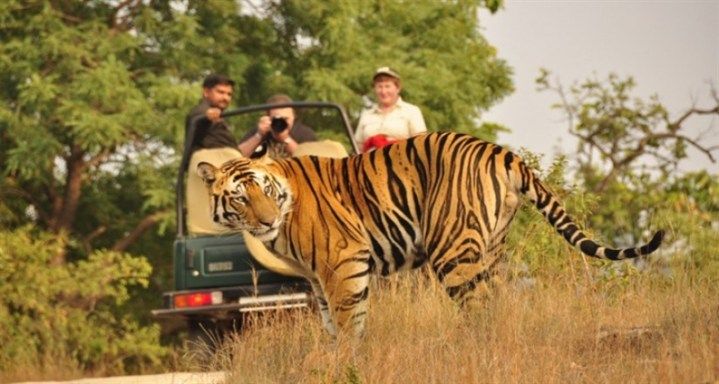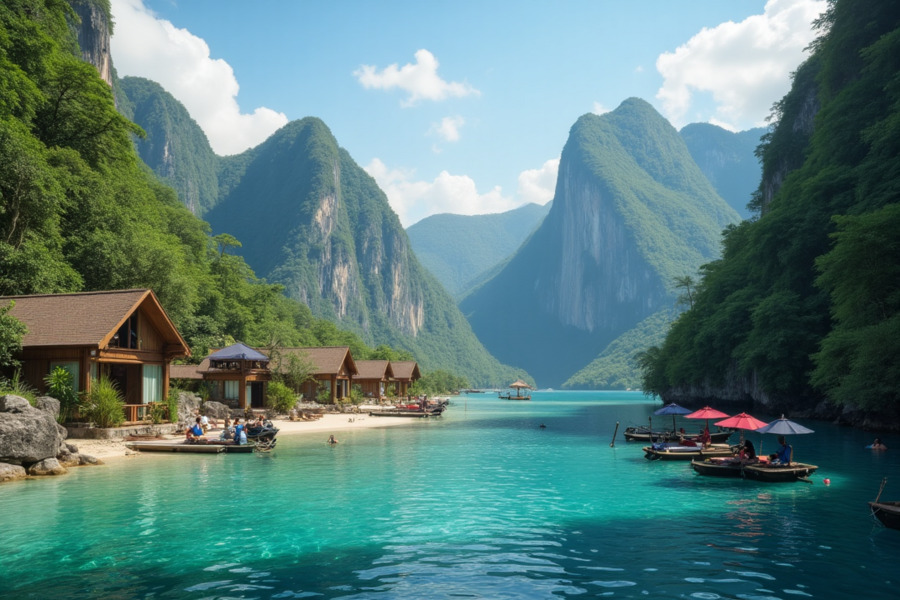≡-Discover Shuklaphanta National Park: Nepal’s Hidden Gem in the Southwestern Wilderness – Viral of Today
<> Viral of Today <>
Home » ASIA » Discover Shuklaphanta National Park: Nepal’s Hidden Gem in the Southwestern Wilderness Published on
September 4, 2025One of Nepal’s most promising but little-visited natural areas is Shuklaphanta National Park, which is tucked away in the southwest of the country. Despite having a wide variety of wildlife, expansive grasslands, and charming wetlands, the park has obstacles that prevent it from becoming a popular destination for tourists. In sharp contrast to the years prior to the Covid pandemic, the park has seen a steady decline in visitors despite its alluring natural beauty.A Rich Tapestry of Flora and FaunaSpanning an area of 305 square kilometres, Shuklaphanta is renowned for being home to Asia’s largest herd of swamp deer, which numbers over 2,300. This expansive protected area is also a sanctuary for a diverse range of wildlife species. According to recent surveys, the park is home to 43 adult tigers, 23 rhinos, 306 blackbucks, and 461 bird species. With such an extensive variety of flora and fauna, the park has the potential to become a significant destination for ecotourism enthusiasts. Additionally, Shuklaphanta is home to scenic lakes such as Ranital and Shikarital, with the latter under study for inclusion in the Ramsar wetlands list.A Decline in Tourist ArrivalsDespite the park’s ecological wealth, Shuklaphanta’s tourism numbers have been on a downward trajectory. The year 2024-25 recorded a modest 3,722 visitors, which is a significant drop from the previous year’s 4,006. The pre-pandemic era had seen much higher numbers, with 12,138 tourists visiting the park in 2017-18.The Pandemic’s Impact on TourismLike many other tourist destinations worldwide, Shuklaphanta saw a sharp decline in visitors following the outbreak of the Covid pandemic. With global travel restrictions and the suspension of many tourism activities, the park’s once thriving tourist flow dwindled. While the pandemic’s effects have been felt across the world, the recovery in Shuklaphanta has been slower than expected. The situation remains dire, with little improvement in the overall tourism infrastructure and services.Challenges to Growth: Infrastructure and AccessibilityOne of the most significant hurdles facing tourism in Shuklaphanta is the park’s lack of proper infrastructure. Although the park offers a range of nature-based activities, such as jungle safaris, birdwatching, and nature walks, there is a severe lack of quality accommodations and reliable transportation options. For most tourists, the journey to the park remains cumbersome, with limited air and land transport options available. High airfare, especially for international visitors, further discourages potential tourists from making the trip.Despite the ongoing efforts to improve infrastructure, the budget allocated for tourism-related developments remains limited. In 2025-26, only around NPR 3 million was provided for the park’s tourism infrastructure, which has led to slow progress. Additionally, the absence of a permanent bridge over the Chaudhar river remains a major obstacle. This bridge would provide year-round access to the park’s different sectors, allowing for a more diverse and extensive range of activities. Without the bridge and further road improvements, tourism in Shuklaphanta remains restricted to only certain months of the year.The Need for Private InvestmentShuklaphanta also faces a critical shortage of quality accommodations. The nearby town of Mahendranagar offers a few standard hotels, but there are limited options for nature enthusiasts looking for unique eco-lodges or resorts near the park. Private investment in the hospitality sector is essential to cater to the growing demand for eco-friendly accommodations. Eco-lodges and boutique hotels around the park could provide a much-needed boost to tourism, enhancing the visitor experience and encouraging longer stays.Hope on the Horizon: Majhgaun AirportA new ray of hope for Shuklaphanta lies in the ongoing development of the Majhgaun airport, which, when completed, will improve access to the park and neighbouring regions. This airport is expected to make travel easier and faster for both domestic and international tourists. However, even with the airport’s construction, experts argue that better road networks, improved tourism promotion, and cooperation with neighbouring India are crucial for a full recovery of tourism in the region. The park’s proximity to Indian states like Uttarakhand and Uttar Pradesh offers a significant opportunity to attract Indian tourists, who make up a large portion of international visitors to Nepal. To unlock this potential, smoother border procedures and better transport connectivity will be vital.Limited Tourism Promotion EffortsIn comparison with other popular destinations in Nepal, Shuklaphanta has not received the publicity it deserves. Efforts to promote the park have been minimal, and it has largely remained off the radar for many international and local tourists. However, plans are underway to improve its visibility. The Nepal Tourism Board (NTB) has announced plans to open an office in Sudurpaschim province and establish a tourist information centre in Gaddachauki, located near the Nepal-India border. With these initiatives, the park’s profile may rise, attracting more visitors and boosting the local economy.Birdwatching: A Growing AttractionOne of the main draws of Shuklaphanta is its birdlife. Recently, the park has gained recognition as a major bird-watching destination. Numerous bird species, both local and migratory, flock to the park’s wetlands and grasslands, making it an ideal location for birdwatching enthusiasts. The park’s rich biodiversity has led to the discovery of several new bird species in recent years, including the lesser grey shrike, which was sighted for the first time in May 2023. With over 461 bird species currently recorded in the park, it holds great potential to become a major destination for birdwatchers from around the globe.The Future of ShuklaphantaShuklaphanta National Park has everything it needs to grow into one of Nepal’s major ecotourism destinations. For those who enjoy the outdoors, its expansive vistas, uncommon fauna, and placid lakes provide an absolutely unforgettable experience. However, the park’s tourism potential will remain unrealised unless significant advancements are made in marketing, transportation, and infrastructure. Private investments, government assistance, and international cooperation—especially with neighbouring India—are essential to Shuklaphanta’s future.Shuklaphanta could become the star of Nepal’s tourism offerings by resolving the present issues and stepping up its marketing initiatives, giving tourists an experience they won’t soon forget and supporting the nation’s booming ecotourism industry.[Image Source: Dudhwa National Park Tour Official Website]
This information will surprise you!
See also
- Read until the end to discover everything.
- Important information you need to know.
- Interesting facts and helpful tips.
Conclusion
Did you enjoy the news? Keep following us daily!













